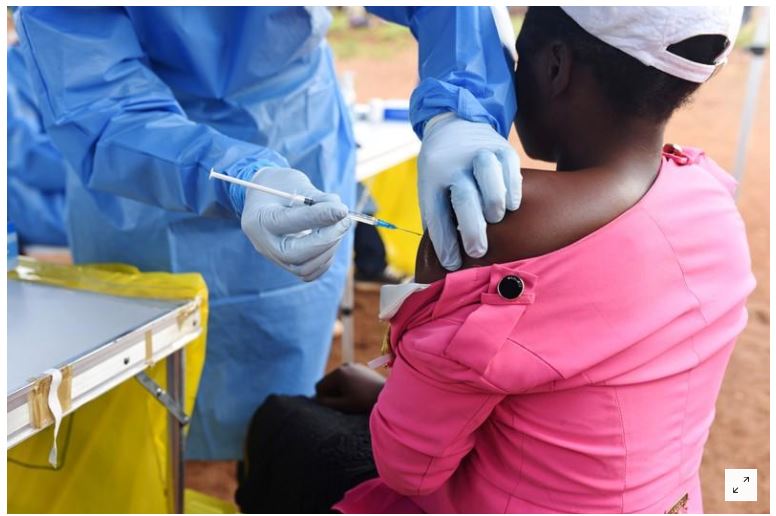Today (November 29, 2018) the ongoing Ebola outbreak in the Democratic Republic of Congo (DRC) reached 426 cases, surpassing the number of cases in the 2000-2001 Uganda outbreak and making it the second worst in history after the 2014 West Africa outbreak which killed over 11,000 people.

November 10, 2018 / 1:42 PM / Updated a day ago
Current Ebola outbreak is worst in Congo’s history – ministry
2 Min Read
A Congolese health worker administers Ebola vaccine to a woman who had contact with an Ebola sufferer in the village of Mangina in North Kivu province of the Democratic Republic of Congo, August 18, 2018. REUTERS/Olivia Acland
The emergency response has been complicated by ongoing conflict in North Kivu, where more than 50 armed groups are operating, and where the disease has spread across 14 health zones. As of today, the outbreak has seen 426 cases of infection, 245 deaths, with a case fatality rate of 57%.
On multiple occasions over the past months, spikes in violence have forced the suspension of efforts to contain the spread of the disease. These security incidents, coupled with community resistance, make contact tracing, vaccination and community mobilisation particularly difficult, which undermines the success of response efforts. The case fatality rate is 57% which is higher than commonly seen at this stage of an outbreak, especially given we have drugs for treatment and vaccine for prevention for the first time, illustrating the challenges for disease control in the North Kivu region.
“This combination of insecurity, community resistance and disrupted or failing health services amounts to a perfect storm for disease transmission. The international community must continue to pay attention to this crisis or it will likely spiral, costing further lives and possibly spreading over national borders. Yes we need to see more funds and resources mobilised, but also address the impacts of the protracted conflict in DRC. We not only want to put an end to this outbreak but protect and restore people’s health, lives and dignity in this beleaguered region. Whilst we do not, this vast region’s population will continue to suffer and be the source of many future outbreaks that can threaten international health security.”
The International Rescue Committee is on the ground in North Kivu strengthening infection control practices in 51 health facilities, as well as training and mentoring healthcare workers to identify, isolate and refer suspected cases. Via existing teams in the area, the IRC is working to inform the community about the Ebola virus and highlighting the necessary precautions and steps to take if symptoms occur. The IRC is also providing specialised services for women and girls to address the issues they face across the emergency. The work also aims to increase their access to Ebola services and to ensure their voices and experiences are informing any Ebola interventions including community and prevention work.
With more than 13 million people in need of aid, DRC is one of the world’s most complex, chronic and long-standing humanitarian crises. The IRC has been operating in the DRC since 1996 and is a lead humanitarian actor in North Kivu, providing healthcare, women’s protection and empowerment, reproductive health, and child protection to hundreds of thousands of people affected by conflict.

